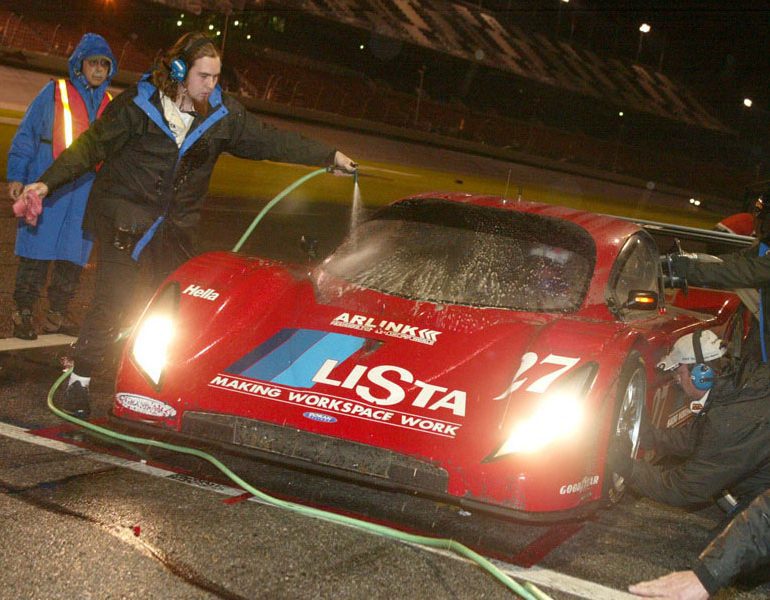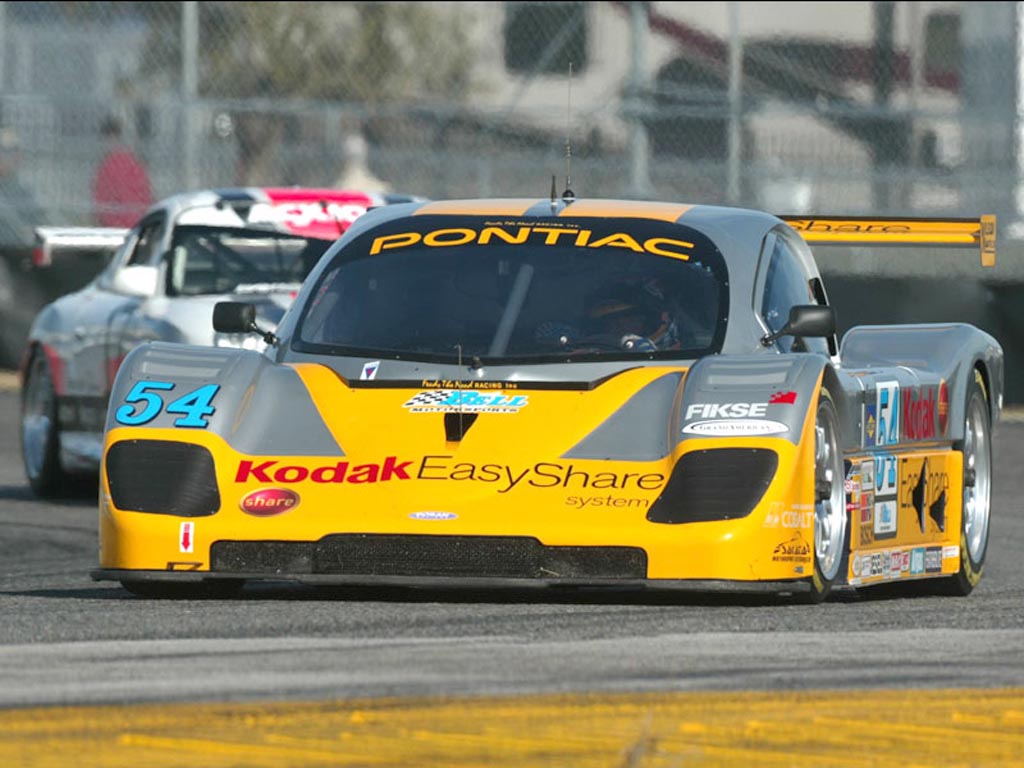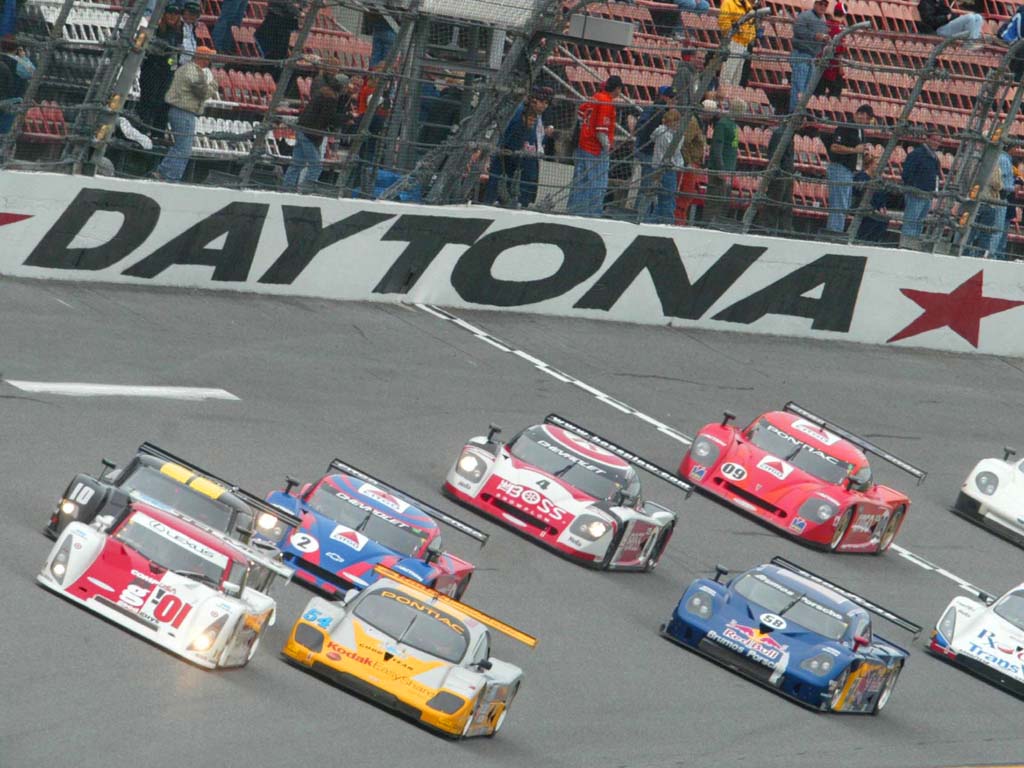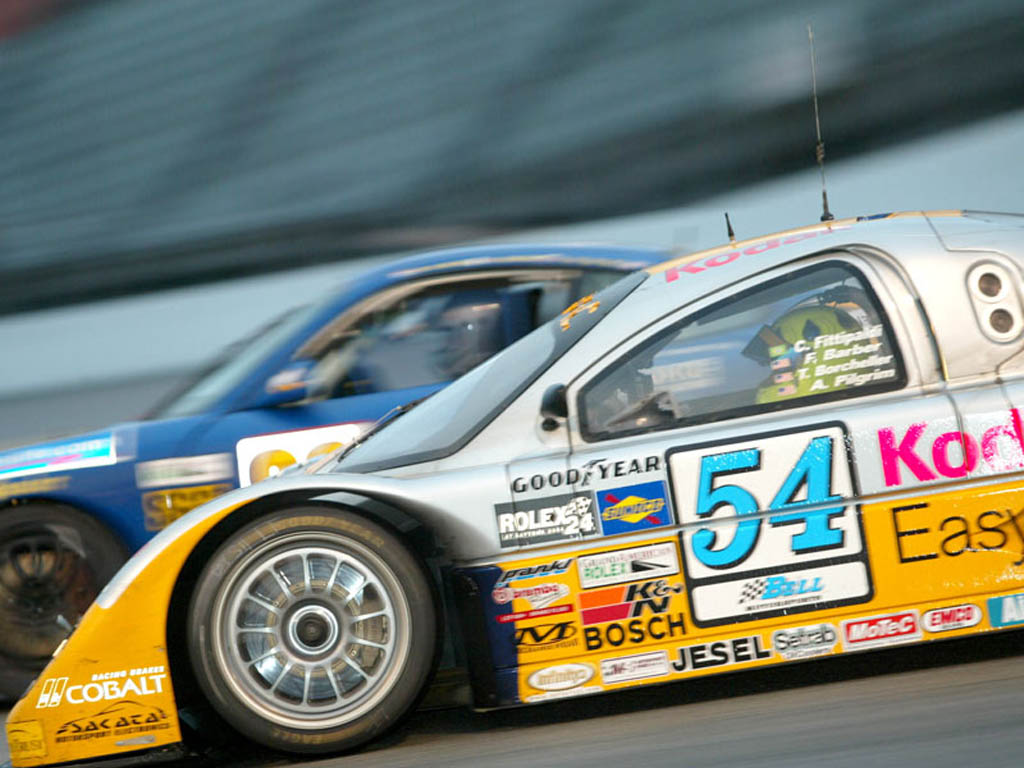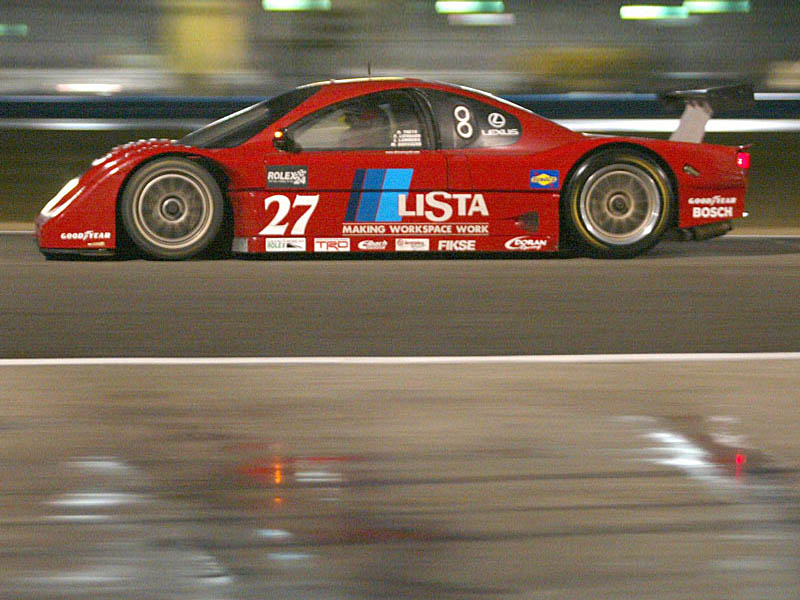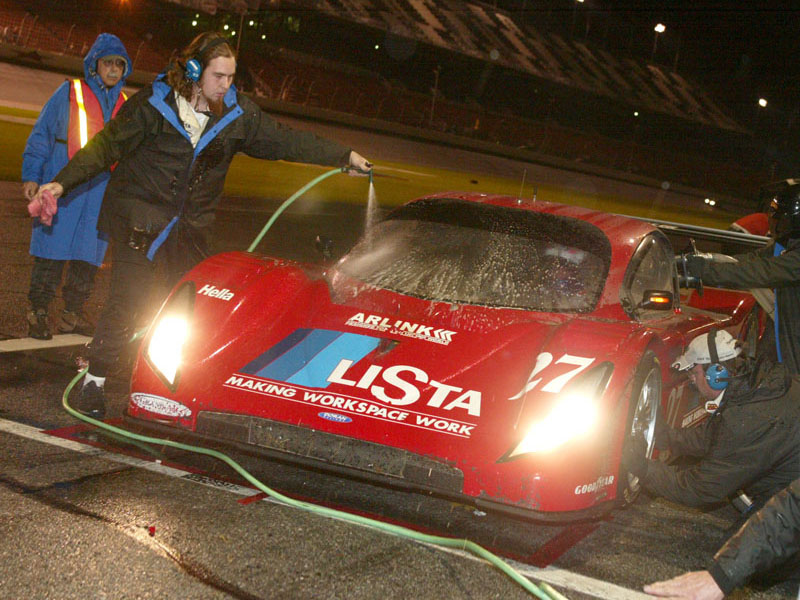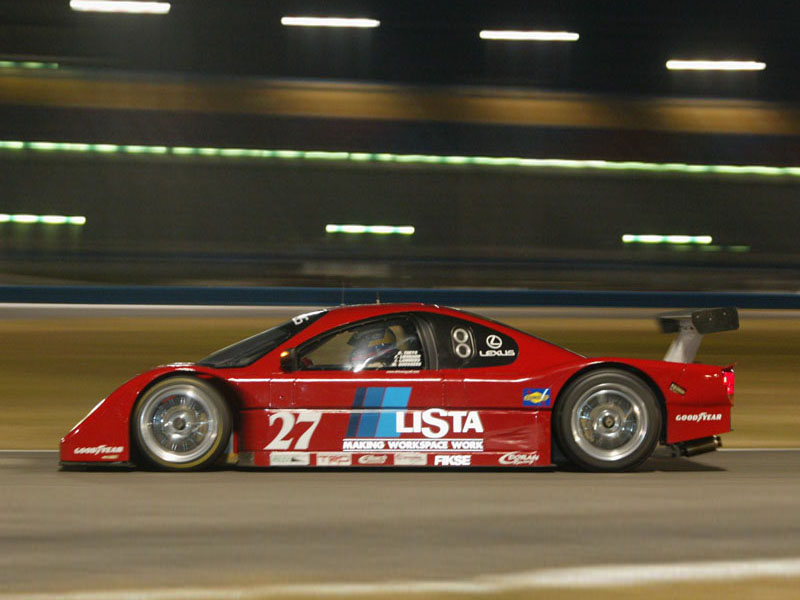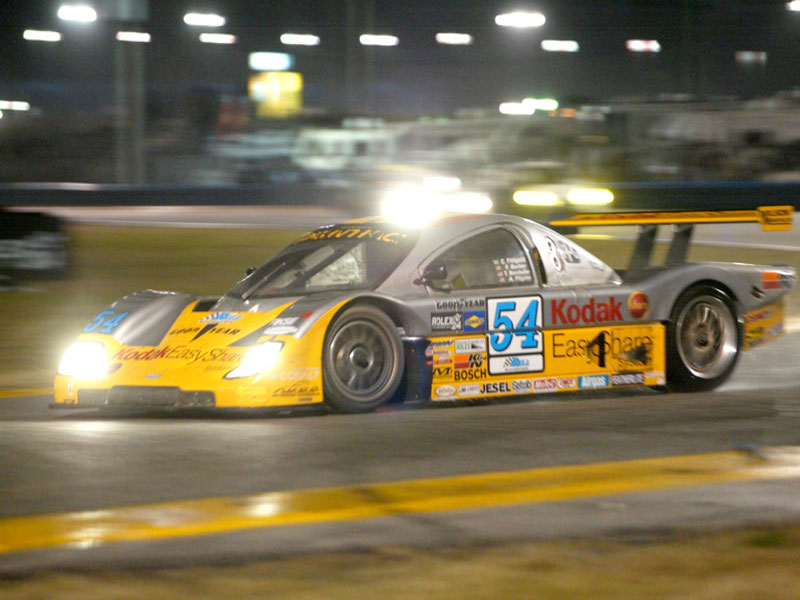2004 Doran JE4
Doran, who have a rich history in motor sport, have designed their own chassis for the Daytona Prototype class in the Grand American Series. The new car carries the initials J. E. in honor of Doran’s father, who set his path in racing. Doran Enterprises has been racing in professional sports car series since 1993. During this time, the company has racked up over 15 wins using their own Doran JE-1, the Ferrari 333SP and the Dollara-Judd racecar.
Kevin Doran and Ron Mathis designed their JE4 Daytona Prototype to accept multiple engines, and their chassis has been powered from a variety of sources. The first JE4 received a Toyota Racing engine while the second car, run Forest Barber, ordered his with a Chevrolet power plant. Subsequent chassis have been fitted with Lexus and Pontiac engines.
Victory at Daytona
DAYTONA BEACH, Fla. (February 01, 2004) — As the final hour of the 42nd anniversary of the 24 At Daytona clicked away, it appeared as the though the Howard-Boss Motorsports No. 2 CITGO Chevrolet Crawford had victory at hand. But the surprises never stop during theDaytona 24, and the No. 2 Chevrolet, that had once held a three-lap lead, fell victim to suspension problems in the chicane, opening the door for the Bell Motorsports No. 54 Pontiac Doran JE4 and drivers Terry Borcheller, Forest Barber, Andy Pilgrim and Christian Fittipaldi to capture the overall victory.
The Bell Motorsports team, which won the 2003 North American Road Racing Championship, not only picked up four Rolex Oyster Perpetual Cosmograph Daytona watches for each of the drivers, but also $100,000 in prize money, the largest amount ever offered by the Grand American Rolex Sports Car Series to the winner.
The No. 2 Chevrolet managed to hold onto third-place in the Daytona Prototypes class, after being passed with only two laps remaining in the race by the Doran-Lista Racing No. 27 Lexus Doran JE4 of Didier Theys, Fredy Lienhard, Jan Lammers and Marc Goossens, which took home second-place honors in the Daytona Prototypes class with its fourth-place overall finish.
The conditions in the Daytona 24 were grueling, with most of the race held under cool temperatures, wind and rain. During the early morning hours, the race was run under caution for more than three hours and at 7:38 a.m., for the first time in 15 years, the Daytona 24 was red flagged for poor visibility and standing water. At 10:30 a.m., the race resumed setting up a two hour, 42-minute sprint to the finish.
Daytona Prototypes
For the 2003 & 2004 season, the Grand American Road Racing Association has a new class for prototype racecars. Consisting of current Sports Racing Prototypes (SRPII) and new Daytona Prototypes, this class will represent the fastest cars in the 2003 season.
At the center of the Daytona Prototypes will be a normally aspired six or eight cylinder engine. The framework around the engine is limited to a steel or aluminum in a tubular frame or semi-monocoque setup. The engine must be unstressed. A minimum weight restriction is set from 1975 pounds to 2050 pounds based on engine displacement.
Story by Grand American Road Racing Association & Supercars.net
In Detail
| type | Series Production Car |
| price $ | $ 395,000 |
| engine | Lexus V8 |
| position | Mid-Longitudinal |
| displacement | 4350 cc / 265.5 in³ |
| power | 372.9 kw / 500 bhp @ 8200 rpm |
| specific output | 114.94 bhp per litre |
| bhp/weight | 516.53 bhp per tonne |
| body / frame | Hybrid Aluminum Honeycomb & Aluminum Sheet over Steel Tube Chassi |
| driven wheels | RWD |
| front brakes | Brembro Vented Discs |
| rear brakes | Brembro Vented Discs |
| steering | Unassisted Rack & Pinion |
| f suspension | Unequal A-Arms w/Pull-Rod Activated Ohlins Shock Absorbers & Springs |
| r suspension | Unequal A-Arms w/Pull-Rod Activated Ohlins Shock Absorbers & Springs |
| curb weight | 968 kg / 2134 lbs |
| wheelbase | 2845 mm / 112.0 in |
| length | 4445 mm / 175 in |
| width | 2007 mm / 79 in |
| height | 1222 mm / 48.1 in |
| transmission | Emco Sequential Six-Speed |
| 0 – 60 mph | ~1.90 seconds |


